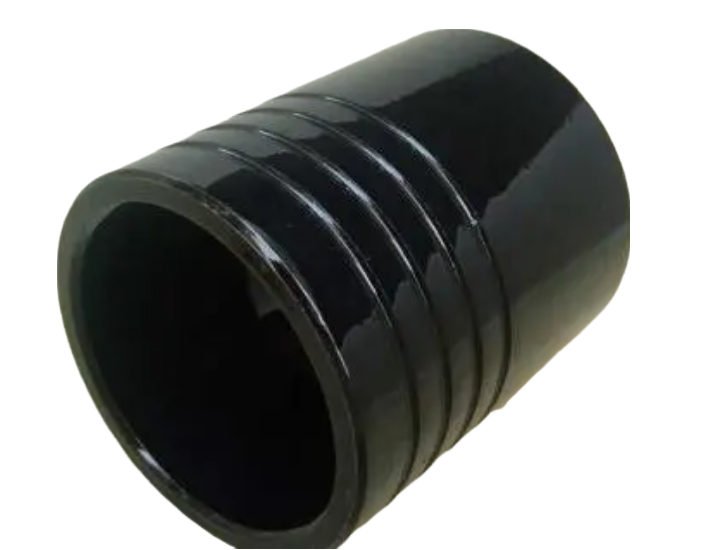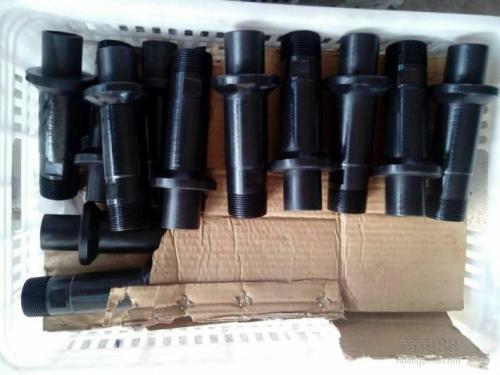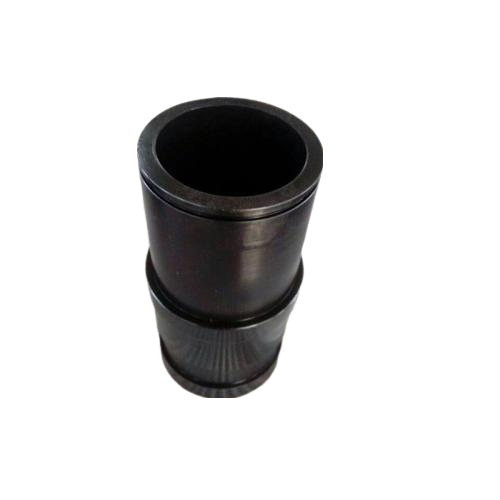QPQ "is the abbreviation for" Quench Polish Quench ". After salt bath composite treatment, in order to reduce the surface roughness of the workpiece, a polishing process can be performed on the surface of the workpiece, followed by an oxidation process in the salt bath. This is very necessary for precision parts and workpieces with high surface roughness requirements. It is referred to as QPQ salt bath composite treatment technology in China. The QPQ salt bath composite treatment technology can significantly improve the wear resistance and corrosion resistance of metal surfaces, while the workpiece hardly deforms. It is a new metal surface strengthening and modification technology. This technology achieves the combination of nitriding process and oxidation process; Composition of nitrides and oxides; Composite of wear resistance and corrosion resistance; The combination of heat treatment technology and anti-corrosion technology.

The QPQ salt bath composite treatment technology was invented by a German company in the 1970s. After decades of continuous development and improvement, its application scope has become wider and wider. Therefore, it is considered a huge progress in the field of metal surface strengthening technology abroad and is called a new metallurgical method. At present, the QPQ salt bath composite treatment technology has also been widely promoted and applied in China, especially in automobiles, motorcycles, axle products, electronic parts, textile machinery, machine tools, electrical switches, and molds, with outstanding results.

1、Good wear resistance
In the QPQ process, metal materials react with salt bath liquid at a working temperature of 570 ±10 ℃, forming a dense compound layer with excellent quality on the metal surface. This compound is completely composed of ε epsilon; Composed of iron nitride, it can efficiently improve the hardness and density of the metal surface, thereby providing good wear resistance on the metal surface. The surface hardness value of processed metal materials mainly depends on the alloying elements in the steel. The higher the alloying element content, the higher the hardness of the infiltration layer. According to the hardness of the infiltration layer, commonly used materials can be divided into the following categories:
(1) Carbon steel, low alloy steel
Representative steel grades: 20, 45, TiO2, 20Cr, 40Cr, etc. Surface hardness of infiltration layer: 500-700HV
(2) Alloy steel
Representative steel grades: 3CrW8V, Crl2MoV, 38CrMoAl, 1Crl3-4Cr13, etc. Surface hardness of infiltration layer: 850-1000HV
(3) Representative steel grades for high-speed steel and austenitic stainless steel: quenched Wl8Cr4V, W6Mo5Cr4V2, and 1Crl8Ni9Ti layers, surface hardness: 1000-1250HV
(4) Surface hardness of cast iron infiltration layer:>500HV
The sliding wear test data of workpieces made of 40Cr material after different treatment methods are based on the wear value of 0.22mg of QPQ. The wear resistance of QPQ process is 2.1 times that of hard chromium plating, 2.8 times that of ion nitriding, 23.7 times that of high-frequency quenching, and 29.4 times that of conventional quenching.
2、Good corrosion resistance
Comparison of neutral salt spray tests on 45 # steel with 1Cr18Ni9Ti stainless steel and 1Cr13 material after undergoing QPQ salt bath composite process, decorative chromium plating, hard chromium plating, and ordinary blackening treatment. The corrosion resistance of 45 # steel after QPQ treatment is 5 times that of 1Cr18Ni9Ti stainless steel, 70 times that of hard chromium plating, and 280 times that of ordinary blackening. Other materials can undergo neutral salt spray testing for 100-300 hours after being processed by the QPQ process.
3、Good fatigue resistance
The metal surface treated by the QPQ salt bath composite process has introduced and generated high residual compressive stress, resulting in a significant improvement in various types of fatigue strength. Through experiments, it has been proven that the fatigue strength can be increased by about 100%, slowing down the occurrence of surface defects such as pitting and rust.
4、Minimal deformation
Due to the low process temperature, the QPQ salt bath composite treatment technology will not undergo structural transformation below the phase transition point of the steel. Therefore, compared with hardening processes such as quenching, high-frequency quenching, carburizing quenching, and carbonitriding that generate huge structural stress, the deformation of the treated workpiece is much smaller. At the same time, due to the fact that after nitriding at 570-580 ℃, the workpiece needs to be kept at 350-400 ℃ for 15-20 minutes, which greatly reduces the thermal stress generated during workpiece cooling. Therefore, the QPQ salt bath composite process almost does not deform the workpiece and is the hardening technology with the smallest deformation, which can effectively solve the hardening deformation problem that conventional heat treatment methods are difficult to solve.
5、Low carbon and environmental protection
The German company, which invented this process, won the German Environmental Protection Award for this process. In China, the QPQ treatment process has been tested and identified by relevant environmental protection departments, and has been proven to be pollution-free, pollution-free, and free of heavy metals by users across the country. And it is used to replace some heavily polluting processes such as electroplating.
6、Can replace multiple processes and reduce time costs
After being processed by the QPQ salt bath composite process, metal materials not only improve their hardness and wear resistance, but also improve their corrosion resistance. Therefore, they can replace the conventional quenching (ion nitriding, high-frequency quenching, etc.) - tempering - blackening (chromium plating) and other multiple processes, greatly shortening the production cycle and reducing production costs. A large amount of production data shows that QPQ treatment can save 50% energy compared to carburizing and quenching, save 30% cost compared to hard chromium plating, and have high cost-effectiveness.

1、The most suitable material:
Various structural steels: dull iron, Q235, 20, 20Cr, 20CrMnTi, 20CrNiMo, 35CrMo, 42CrMo, 45, 40Cr, 50CrV, 65Mn, 38CrMoAl.
Various tool steels: T7~T12, 5CrMnMo, 5CrNiMo, 3Cr2W8V, GCrI5, HI3 (0.35% C, 1.5% Mo, 5% Cr, 1% Si, 1% V), Cr12MoV, various high-speed steels.
Various stainless steels: 0Crl3~4Crl3, 201, 301, 304, 316, 1Cr18Ni9Ti, 0Crl8Nil2MoTi, 4Cr9Si2, 5Cr21Mn9Ni4N.
Various cast irons: gray iron, malleable iron, ductile iron, wear-resistant alloy cast iron.
Various iron based powder metallurgy parts
2、Industry Applied:
Wear resistance, corrosion resistance, fatigue resistance, anti bite and other parts are required for automobiles, motorcycles, locomotives, internal combustion engines, textile machinery, engineering machinery, light industrial machinery, pump valve equipment, hydraulic machinery, printing and packaging machinery, chemical machinery, electric tools, agricultural machinery, machine tools, tools and molds, high and low voltage electrical switches, etc.
3、Typical applications:
Engine valves, crankshafts, cylinder liners, gears, cams, bearings, spindles, sliders, steering arms, automotive wiper ball joints, guide rails, hydraulic cylinders, universal joints, connecting pins, various molds, pistons, threaded screws, bolts and nuts, pump bodies, high-speed steel drill bits, gun barrels, various cutting tools, flanges, keypins, gaskets, shells, and so on.
Remarks: 1. Before the QPQ salt bath composite process, complex parts need to be tempered at a temperature above 580℃ and then slowly cooled for quenching and tempering treatment.In order to compensate for the slight swelling after the process treatment, a processing margin of 10±2µm should be left in the diameter direction before the precision parts are processed.
Contact: Alexander Sun
Phone: +86 19916725893
Tel: 0512-55128901
Email: [email protected]
Add: No.6 Huxiang Road, Kunshan development Zone, JiangsuShanghai Branch: No. 398 Guiyang Rd, Yangpu District, Shanghai, China